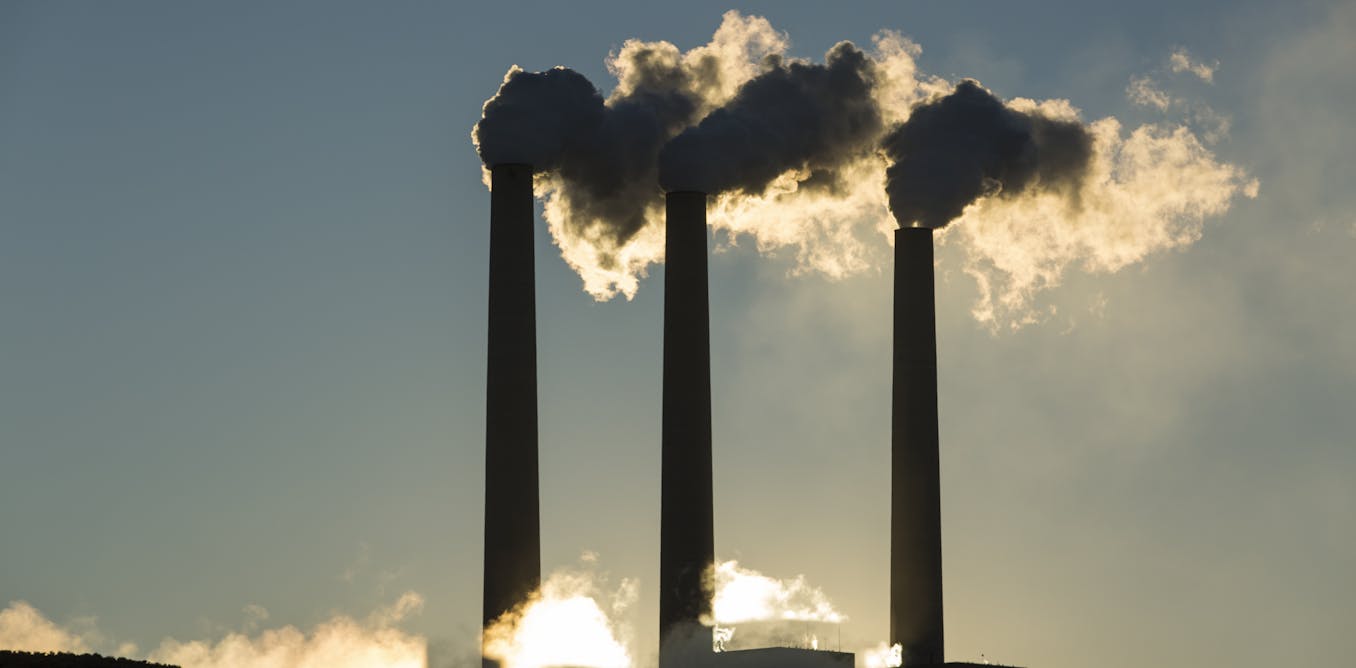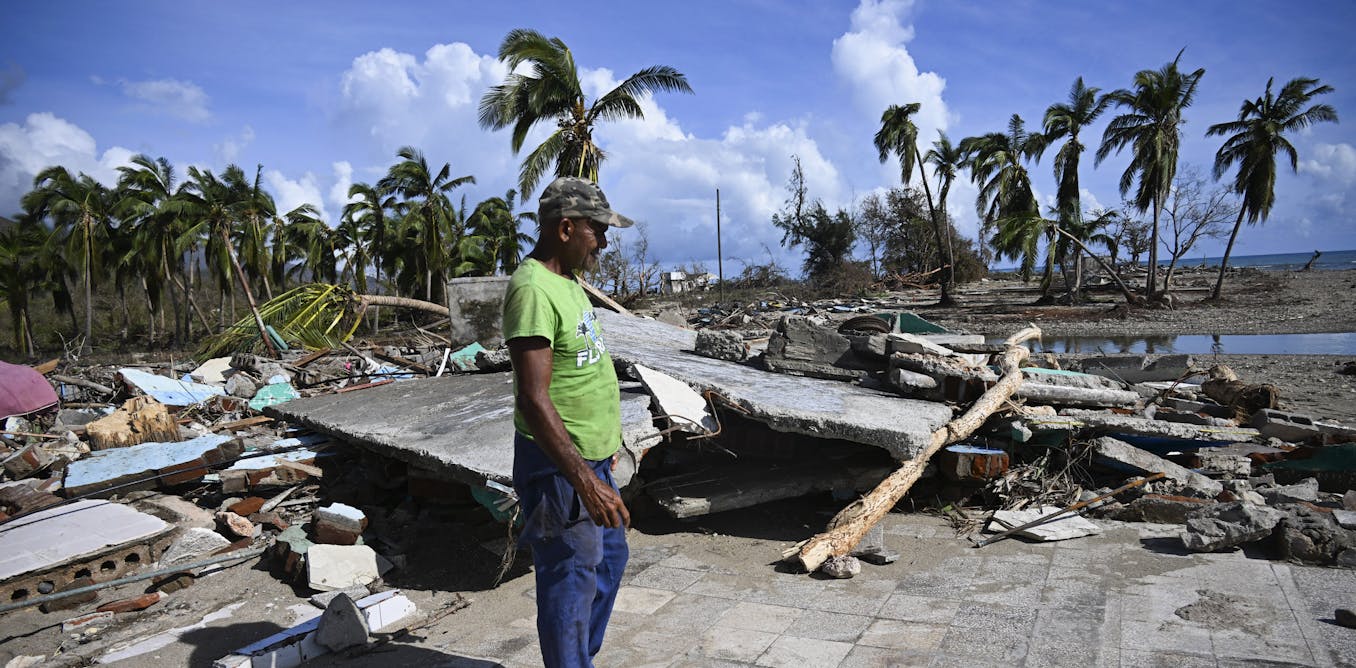When the U.S. government shut down in late 2018, it furloughed nearly 600 Environmental Protection Agency pollution inspectors for more than a month. Those workers had to stop their work of monitoring and inspecting industrial sites for pollution, and stopped enforcing environmental-protection laws, including the Clean Air Act.
My colleagues and I analyzed six years’ worth of air quality levels, emissions measurements, power production data and weather reports for more than 200 coal-fired power plants around the country. We found that the coal plants’ operators appeared to take advantage of the lapse in enforcement of environmental regulations.
As soon as the shutdown began, coal-fired power plants started producing about 15% to 20% more particle pollution. And as soon as the government reopened and inspections resumed, pollution levels dropped.
Particulate matter is dangerous
The longest federal government shutdown in U.S. history up until that time began on Dec. 22, 2018, and lasted until Jan. 25, 2019. During that period, about 95% of EPA employees were furloughed, including nearly all the agency’s pollution inspectors, who keep track of whether industrial sites like coal-fired power plants follow rules meant to limit air pollution.
Among those rules are strict limits on a type of pollution called particulate matter, which is sometimes called PM2.5 and PM10. These microscopic particles are smaller than the width of a human hair. When inhaled, they can travel deep into the lungs and even get into the bloodstream. Even short-term exposure to particulates increases the risk of asthma, heart disease and premature death.
U.S. Environmental Protection Agency
To determine whether coal-fired power plants continued to obey the rules even when environmental inspectors were furloughed and not watching, we examined data on emissions of more than 200 coal-fired power plants across the country. We looked at satellite data from NASA that provides a reliable indicator of particulate pollution in the atmosphere. We also looked at the amounts of several types of chemicals recorded directly from smokestacks and sent to the EPA.
We looked at each plant’s daily emissions before, during and after the 2018-2019 shutdown, and compared them with the plants’ emissions on the same calendar days in the five previous years, when EPA inspectors were not furloughed.
Pollution rose and fell with the shutdown
We found that as soon as the EPA furlough began in 2018, particulate emissions within 1.8 miles (3 kilometers) around the coal-fired power plants rose, according to the NASA data.
The data indicated that, on average, particulate matter during the 2018 and 2019 shutdown was 15% to 20% higher than it had been during the same period in the preceding five years.
And once the EPA inspectors returned to work, the plants’ average particulate pollution dropped back to its pre-shutdown level.
We also found that two other common air pollutants from coal-fired power plants, sulfur dioxide and nitrogen oxides, did not increase during the furlough period. Those gases, unlike particulate matter, are continuously monitored by sensors inside coal plants’ smokestacks, even when the federal government is not operating. Particulate emissions, however, are not continuously monitored: Enforcement of those emissions standards relies on the manual collection of samples from monitors and on-site inspections, both of which halted during the shutdown.
The pattern was clear: When the EPA stopped watching, coal plants increased pollution. And once inspections resumed, emissions dropped back to normal.
Considering various explanations
To confirm that the increase in particulate pollution during the shutdown was due to the lack of inspections and not because of some other factors such as weather fluctuations, we tested a range of alternative explanations and found that they did not fit the data we had collected.
For example, weather records showed that wind, humidity and temperature at and around the coal plants during the shutdown were all within the same ranges as they had been over the previous five years. So the increased particulate pollution during the shutdown was not due to different weather conditions.
Electricity demand – how much power the plants were generating – was also typical, and did not increase significantly during the shutdown. That means the coal plants weren’t polluting more just because they were being asked to produce more electricity.
Our analysis also revealed that the coal plants didn’t shift which particular boilers were operating to less efficient ones that would have produced more particulates. So the increase in pollution during the shutdown wasn’t due to just using different equipment to generate electricity.
The emissions data we collected also included carbon dioxide emissions, which gave us insight into what the coal plants were burning. With similar weather conditions and amounts of electricity generated, different types of coal emit different amounts of carbon dioxide. So if we had found carbon dioxide emissions changed, it could have signaled that the plants had changed to burning another type of coal, which could emit more particulate matter – but we did not. This showed us that the increase in particulate emissions was not from changing the specific types of coal being burned to generate electricity.
All of these tests helped us determine that the spike in particulate matter pollution was unique to the 2018–2019 EPA furlough.
Spewing particulate matter
All of this analysis led us to one final question: Was it, in fact, possible for coal-fired power plants to quickly increase – and then decrease – the amount of particulate matter they emit? The answer is yes. Emissions-control technology does indeed allow that to happen.
Power plants control their particulate emissions with a device called an electrostatic precipitator, which uses static electricity to collect particles from smoke and exhaust before it exits the smokestack. Those devices use electricity to run, which costs money, even for a power plant. Turning them off when the plants are being monitored risks incurring heavy fines. But when oversight disappeared, the power plants could save money by turning those devices off or reducing their operation, with less risk of being caught and fined.
Our findings indicate that air pollution regulations are only as effective as their enforcement, which had already been decreasing before the 2018 shutdown. Between 2007 and 2018, EPA’s enforcement staff declined by more than 20%, and the number of inspections dropped by one-third.
Since the new administration took office in January 2025, EPA staffing has been reduced significantly. We found that without strong and continuous monitoring and enforcement, environmental laws risk becoming hollow promises.

The post “Coal plants emitted more pollution during the last government shutdown, while regulators were furloughed” by Ruohao Zhang, Assistant Professor of Agricultural Economics, Penn State was published on 10/23/2025 by theconversation.com


































Leave a Reply